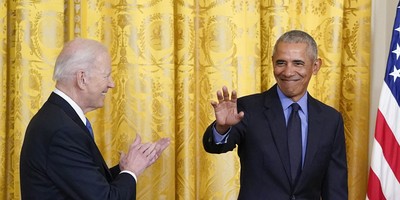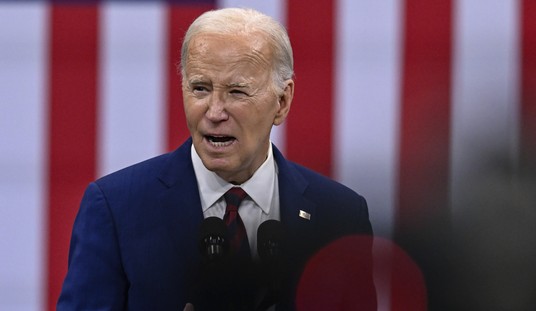In the religious ecstasy of early 2009, when Barack Obama was yet in mid-ascension operating the "Office of the President-Elect" (complete with custom-made seal), he was campaigning hard for his stimulus plan.
On January 10 of that year, the Obama "administration-in-waiting" released a report by its chief economists Christina Romer and Jared Bernstein titled "The Job Impact of the American Recovery and Reinvestment Plan." The thrust of the report was to show how the stimulus plan was far preferable to doing nothing.
"In the absence of stimulus, the economy could lose another 3 to 4 million more [jobs]," Romer and Bernstein estimated. With the stimulus, "we believe a reasonable range for 2010Q4 is 3.3 to 4.1 million jobs created."
The report included a handy graph (ours being such a visually motivated society) that showed exactly the choice we faced. Without the recovery plan, unemployment would peak at a whopping and then-unfathomable 9 percent through the first three quarters of 2010.
With the recovery plan, however, unemployment would peak at just below 8 percent by late 2009 and steadily fall to 7 percent by the end of 2010. By now it would be around 6.6 percent.
Hundreds of other economists, including some Nobel laureates, warned against the folly of the stimulus plan. In full-page ads in major newspapers across the U.S., the Cato Institute published their open letter to the president, which stated,
More government spending by Hoover and Roosevelt did not pull the United States economy out of the Great Depression in the 1930s. More government spending did not solve Japan's "lost decade" in the 1990s. As such, it is a triumph of hope over experience to believe that more government spending will help the U.S. today. To improve the economy, policymakers should focus on reforms that remove impediments to work, saving, investment and production. Lower tax rates and a reduction in the burden of government are the best ways of using fiscal policy to boost growth.
Recommended
It is now mid-July 2011. The latest jobs report is now out, and unemployment is not around 6.6 percent as Obama's economists predicted. Instead it is at 9.2 percent and rising. The same economists predicted that the worst that unemployment would have gotten without the stimulus was 9 percent. With the stimulus, it not only is above that rate, but it has been above that rate since early 2009, shortly after the stimulus passed.
When the stimulus passed in February 2009, there were 141.7 million people employed in the U.S. That number has fallen to 139.3 percent.
That means there are 2.4 million fewer people employed now than when the stimulus passed in February 2009.
It costs a lot of money to throw this many Americans out of work. The stimulus costs $814 billion, according to the CBO. In essence, we are spending about $340,000 for each net new person put out of work since the stimulus passed.
"Lower tax rates and a reduction in the burden of government are the best ways of using fiscal policy to boost growth," counseled the economists who proved to know what they were talking about. To his very core Obama resists that truth, even at this late hour with so many more of his fellow Americans out of work. Three separate wars in the Middle East but still the president's bitterest fight is against lowering tax rates and reducing the burden of government. Witness the debt ceiling standoff in Washington right now.
Epilogue: On February 2, 2009, the new president was interviewed by Matt Lauer on NBC's "Today." He spoke confidently of the stimulus plan. "One nice thing about the situation I find myself in," he said, "is that I will be held accountable. I've got four years."
He added that "a year from now I think people are going to see that we're starting to make some progress, but there's still going to be some pain out there. If I don't have this done in three years," he said, two and a half years ago, "then there's going to be a one-term proposition."
The one term, in the president's stilted speech, undoubtedly refers to one presidential term. It cannot refer to a descriptive term. No single word could capture the colossal failure of the stimulus nor the staggering, stultifying ignorance behind it. Not yet, anyway. One day, however, the term "Obamanomics" may suffice.

























Join the conversation as a VIP Member